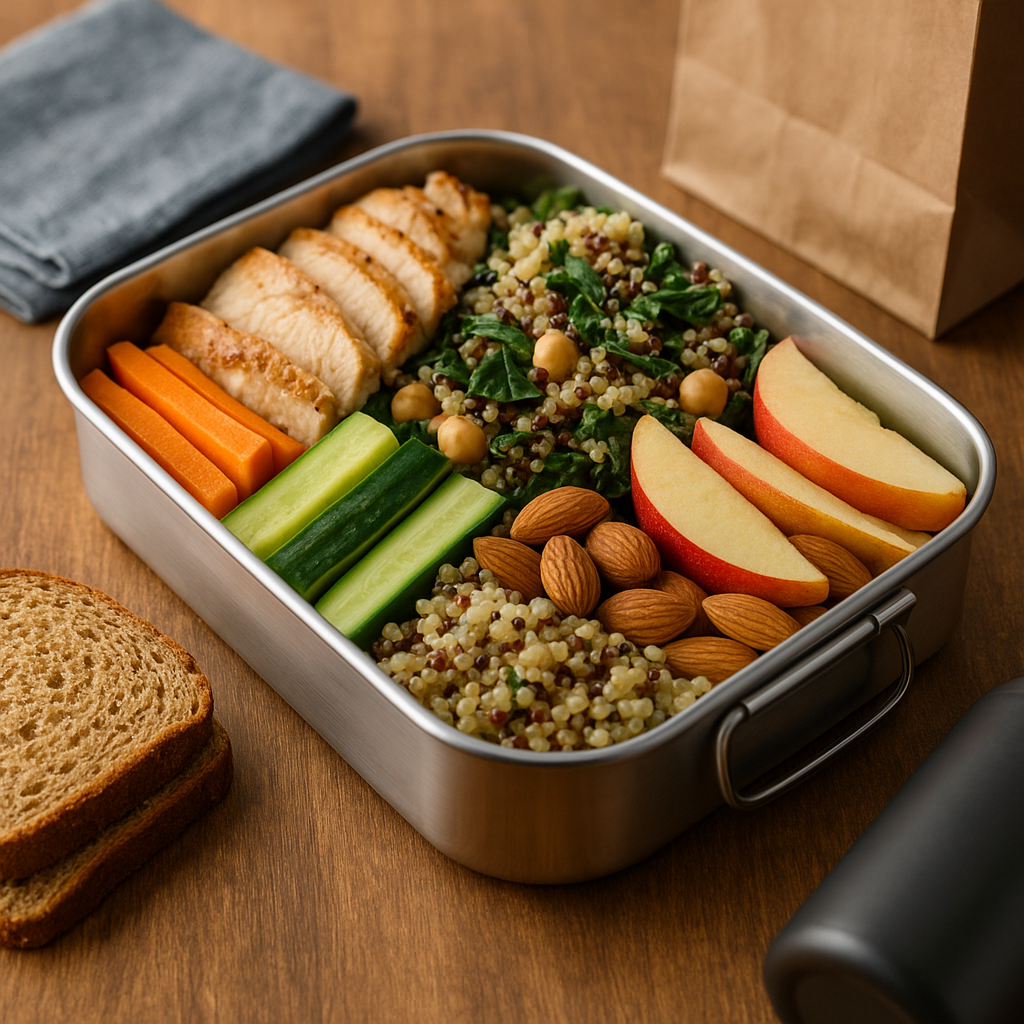Whether you’re working outside the home, going to school, or just want to avoid unhealthy takeout meals, preparing your own lunch is one of the best things you can do for your health. A well-balanced lunchbox keeps your energy steady, helps you stay focused, and supports long-term wellness. The best part? It doesn’t have to be complicated or boring. Here’s how to create simple, tasty, and nutritious meals that you’ll actually look forward to.
1. Focus on Balance: Protein, Carbs, and Healthy Fats
A satisfying lunch includes all three macronutrients. Here’s how to balance your meal:
- Protein (e.g., grilled chicken, tofu, beans, tuna, eggs): keeps you full and supports muscle function.
- Complex carbs (e.g., brown rice, quinoa, whole grain bread, sweet potatoes): give you long-lasting energy.
- Healthy fats (e.g., avocado, olive oil, seeds, nuts): support brain function and help you feel satisfied.
Try to include some of each in every lunchbox you prepare.
2. Add Color with Vegetables and Fruits
Colorful meals are usually more nutritious. Vegetables and fruits provide vitamins, minerals, and antioxidants. Some easy options:
- Cherry tomatoes, cucumber slices, baby carrots, or bell pepper strips
- Apple slices, berries, or grapes
- A small salad with olive oil and lemon
Aim to fill at least ⅓ of your lunchbox with fruits and veggies.
3. Keep It Simple with Meal Prep
Meal prep doesn’t have to mean spending hours in the kitchen. Set aside one or two evenings a week to prep proteins, chop veggies, or cook grains in batches. Use containers with dividers or separate portions for variety. A little planning saves time and helps you make healthier choices during busy days.
4. Healthy Lunchbox Ideas
Here are a few ideas you can rotate during the week:
Mediterranean Bowl
- Grilled chicken or chickpeas
- Quinoa or couscous
- Cherry tomatoes, cucumbers, olives
- Hummus and olive oil drizzle
Wrap & Veggies
- Whole grain tortilla with turkey, lettuce, avocado
- Carrot and celery sticks
- A piece of fruit
Vegan Lunchbox
- Lentil salad with olive oil and lemon
- Steamed broccoli or kale
- Brown rice or sweet potato
- Apple slices with almond butter
Egg Bento Box
- Boiled eggs
- Whole grain crackers
- Baby tomatoes and spinach leaves
- A few walnuts
5. Don’t Forget Snacks
Sometimes we need a little something between meals. Add a small snack to your lunchbox to avoid vending machine temptations:
- A handful of almonds or cashews
- A banana or orange
- Low-sugar granola bar
- Greek yogurt (if refrigerated)
Just be mindful of portion sizes—snacks are meant to hold you over, not replace a full meal.
6. Stay Hydrated
Pack a reusable water bottle and remember to drink throughout the day. If you want variety, try herbal teas, infused water with lemon or cucumber, or even coconut water for an occasional treat.
7. Make It Enjoyable
Presentation matters. If your lunchbox looks appetizing, you’re more likely to eat it. Use containers that keep foods fresh and prevent sogginess. Include a reusable fork or napkin to make it feel more complete. And occasionally add a small treat or handwritten note to make it fun—especially for kids!
Consistency Over Perfection
You don’t need a gourmet lunch every day. What matters most is consistency. Even a simple sandwich with whole ingredients and a piece of fruit is better than fast food. As you build the habit, you’ll get better at choosing combinations that are both healthy and satisfying.
A little effort goes a long way in creating a lunch that supports your energy, mood, and long-term well-being.
